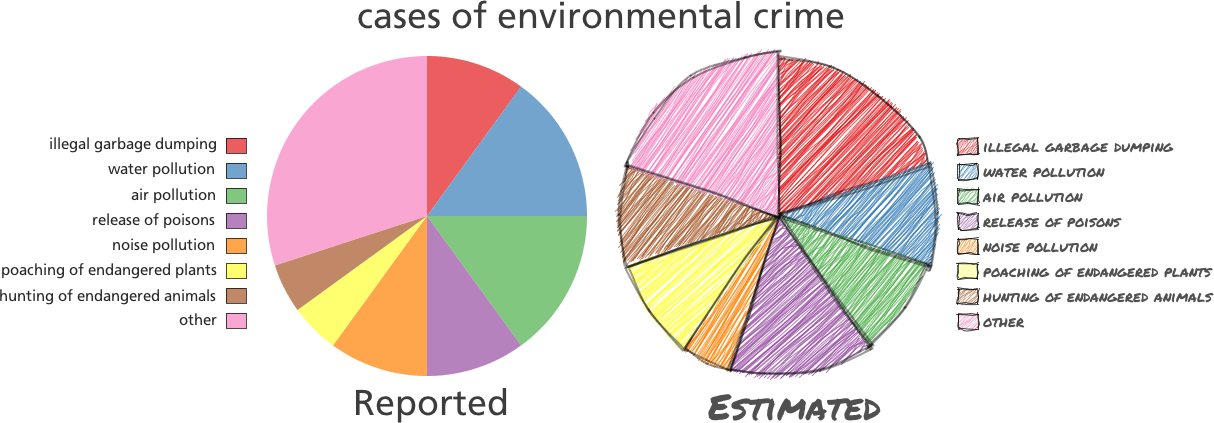Section: New Results
Sketchyness in Visualization
Participants : Tobias Isenberg [correspondant] , Petra Isenberg, Jo Wood, Jason Dykes, Aidan Slingsby, Nadia Boukhelifa, Anastasia Bezerianos, Jean-Daniel Fekete.
AVIZ, in collaboration with City University London, studied how sketchiness can be used, both as a visual style and as a way to represent qualitative uncertainty.
We first studied Handy, an alternative renderer for the Processing graphics environment developed by our collaborators at the City University London [25] . It allows higher-level graphical features such as bar charts, line charts, treemaps and node-link diagrams to be drawn in a sketchy style with a specified degree of sketchiness. Our evaluation concentrated on two core aspects: the perception of sketchiness as a visual variable and higher-level impact of sketchiness on the perception of a whole graphic drawn in this style. Results suggest relative area judgment is compromised by sketchy rendering and that its influence is dependent on the shape being rendered. We showed that degree of sketchiness may be judged on an ordinal scale but that its judgement varies strongly between individuals. We evaluated higher-level impacts of sketchiness through user testing of scenarios that encourage user engagement with data visualization and willingness to critique visualization design. Results suggest that where a visualization is clearly sketchy, engagement may be increased and that attitudes to participating in visualization annotation are more positive. The results of this work have implications for effective information visualization design that go beyond the traditional role of sketching as a tool for prototyping or its use for an indication of general uncertainty.
On this last issue, we have studied whether sketchiness was an effective rendering style for conveying qualitative uncertainty [10] . We compared sketchiness to blur, intensity and dashes and obtained mixed results, showing that sketchiness is not worse than the other visual encodings but that none of them are intuitive and all of them are very limited in range, although still usable for common cases. More work is needed to asses how sketchiness can be best used and to find out more effective encodings for conveying uncertainty in a spontaneous/intuitive way.
For more information, see http://www.aviz.fr/Research/SketchyRendering and http://www.aviz.fr/Research/UncertaintySketchy .



